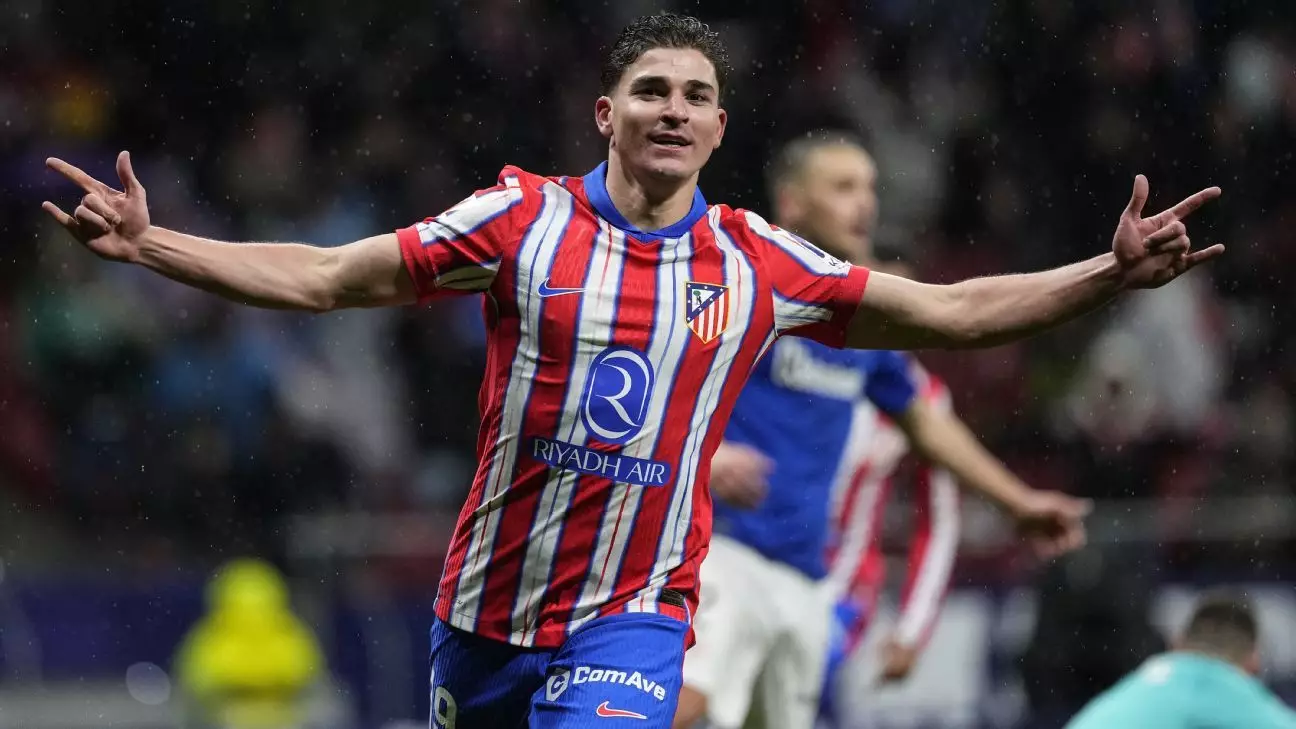In a move that highlights their urgency to secure a promising future, FC Barcelona has turned its attention to Atlético Madrid’s Julián Álvarez as a potential successor to legendary striker Robert Lewandowski. At just 25 years old, Álvarez has already made a significant impact in LaLiga, netting an impressive 27 goals in all competitions since joining Atlético Madrid from Manchester City last summer. His growing reputation as a forward suggests that Barcelona isn’t just looking for immediate reinforcements, but rather is planning for a transformative shift for the club’s attacking lineup.
What makes this interest particularly intriguing is the context of Barcelona’s upcoming presidential elections. Similar to past precedents of major signings being leveraged for electoral gain, Álvarez’s name has emerged as a bargaining chip for candidates to galvanize support. However, this could be more than just political rhetoric; Barcelona’s ambitions to secure a player of Álvarez’s caliber indicate a commitment to reinvigorating a squad that has faced its share of setbacks in recent years.
Atlético Madrid: Reluctance to Sell
Despite Barcelona’s keen interest, the possibility of signing Julián Álvarez represents a complex challenge. Atlético Madrid is, understandably, reluctant to let go of a player who has quickly become a central figure in their attacking strategy. With a contract lasting until 2030, composed with a transfer fee likely surpassing the €75 million they originally invested, any negotiation would need to occur within a tepid environment, proving difficult for Barcelona—whose financial recovery is still under scrutiny.
Álvarez’s immediate loyalty to Atlético adds another layer to the potential transfer. The Argentinian has publicly expressed admiration for Atlético Madrid, having idolized Diego Simeone during his formative years. With the forward enjoying a promising debut season despite Atlético’s mixed league performance, it begs the question: why would he leave a club where he is not only thriving personally but also set to be a key part of their future plans?
Emerging Players and Transfer Speculations
As the transfer talk intensifies around Europe, other nameplates are emerging. The Saudi Arabian club Neom kicked off conversations with Manchester United goalkeeper André Onana, intrigued by the prospect of acquiring an established talent. Onana’s willingness to consider a move to the Middle East reflects a growing trend within football—players willing to explore non-traditional leagues that offer lucrative contracts. Neom’s ambitions to make a splash could potentially reshape player relocations if they secure promotion to the Saudi Pro League.
Meanwhile, clubs like Tottenham, Chelsea, and Newcastle are circulating around Crystal Palace’s promising centre-back, Marc Guéhi. The 24-year-old’s robust presence has garnered interest that could lead to a significant transfer if a deal is agreed upon quickly. However, the potential for Guéhi to become a free agent in 2026 raises critical implications for those clubs keen on solidifying their defenses in the near future.
Strategic Recruitment Amidst Competition
Clubs are undoubtedly charting competitive courses as the football world grows ever more dynamic. Atlético Madrid’s focus on bolstering their squad with targets such as Cristian Romero and Villarreal’s Álex Baena epitomizes the evaluations clubs must make amid financial constraints and external competition. However, negotiating over €100 million in transfer fees will likely prove arduous—even for a club as prominent as Atlético Madrid.
Additionally, Liverpool’s pursuit of Crystal Palace midfielder Adam Wharton captures ongoing conversations about player development and versatility within the current game. Priced at over £50 million, Wharton symbolizes a blend of immediate potential and long-term growth, as Liverpool seeks to reinforce its midfield ahead of crucial tournaments like the World Cup. Considering Wharton’s past injury hurdles, prospective interest will hinge on assurances of playing time that encourage development rather than stymie it.
Negotiation Dynamics and Future Prospects
The backdrop of player transfers is rife with speculative narratives and financial complexities. As clubs navigate the intricacies of contracts, player development, and their respective ambitions, it’s clear that negotiations result in tangled webs of uncertainty. The football landscape is ever-evolving, with talent emerging from unexpected places, and interest piquing in players who can change the trajectory of a club’s fortunes.
The interest in players like Julián Álvarez and André Onana reflects the nuances in modern football—where ambition, loyalty, and financial realities converge. If top clubs want to thrive in this increasingly competitive arena, they must recognize that securing talent often requires more than just financial might; it necessitates a masterclass in persuasion, respect for player aspirations, and strategic foresight in planning for the future.

